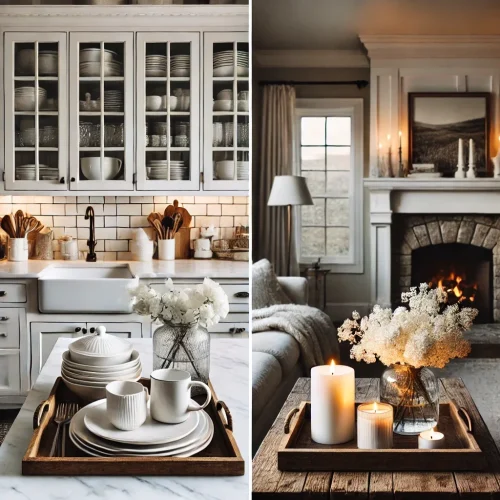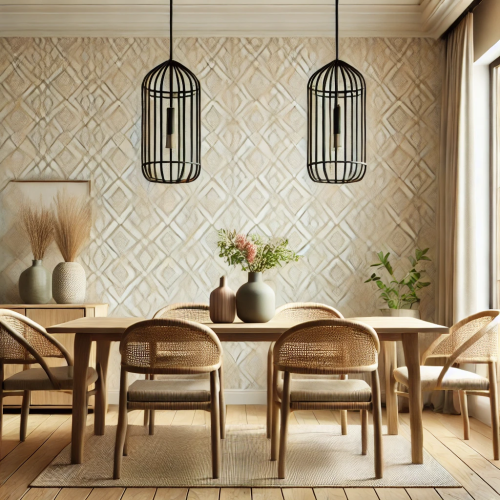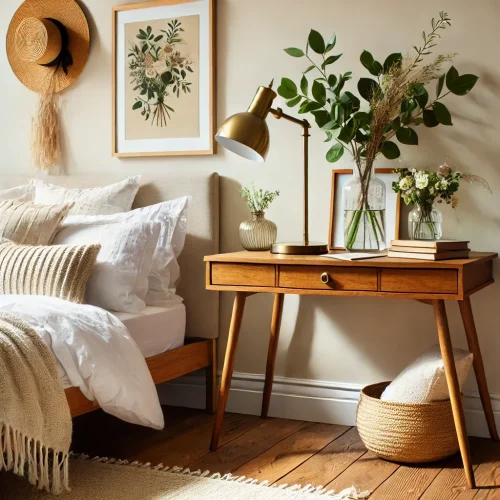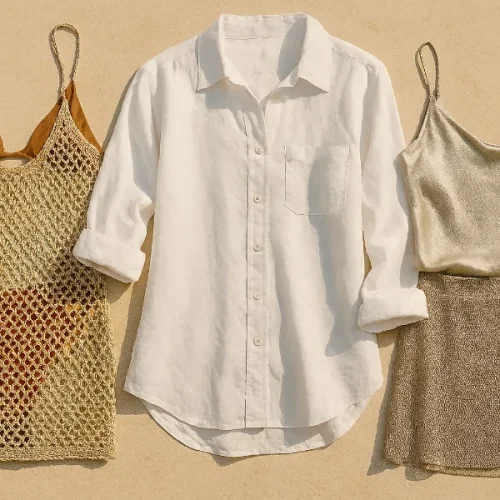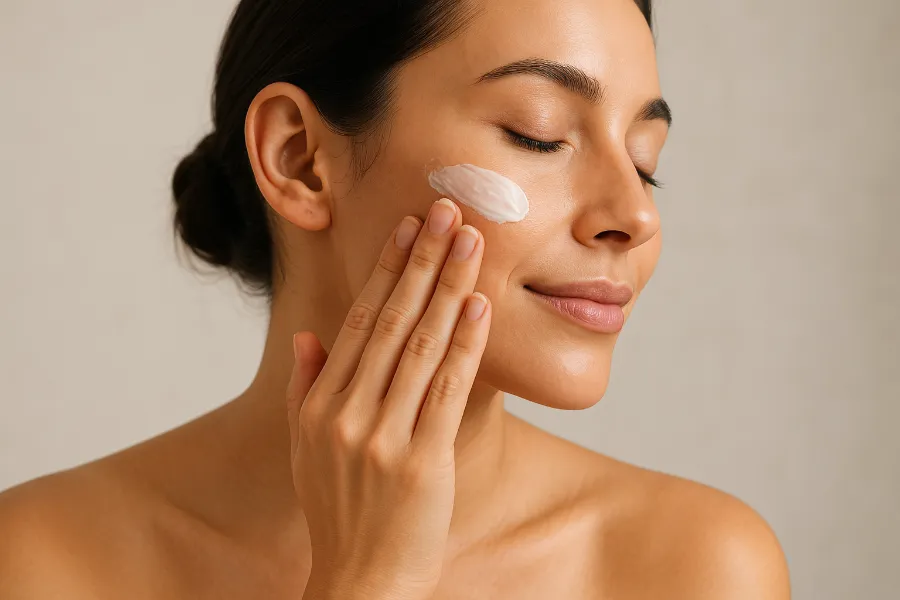
There’s something deeply satisfying about whipping up your own homemade beauty products. With a few natural ingredients and a little creativity, you can craft skincare and haircare that feels luxurious without the price tag—or the long list of chemicals you can’t pronounce. Homemade beauty products give you control over what you put on your skin, allow endless customization, and can even spark a passion for sustainable living.
Let’s dive into why homemade beauty products are worth your time, the essential ingredients you’ll need, and 10 of the best DIY creations to get you started.
Why Homemade Beauty Products Matter
The beauty industry is booming, but with that growth comes excess packaging, synthetic fillers, and ingredients that don’t always align with a clean lifestyle. Making homemade beauty products allows you to:
- Save money – Most recipes use inexpensive ingredients you probably already own.
- Control your ingredients – Say goodbye to parabens, artificial fragrances, and microplastics.
- Customize your formulas – Whether you have oily, dry, or sensitive skin, you can tailor recipes to your exact needs.
- Be eco-friendly – Glass jars, reusable tins, and fewer chemicals mean less waste and a lighter footprint.
- Enjoy the process – Mixing, whipping, and experimenting is both creative and therapeutic.
Best of all, making your own products is empowering. You know exactly what’s in your body butter, face oil, or lip balm—and that’s a game-changer.
Essential Ingredients and Tools for Beginners
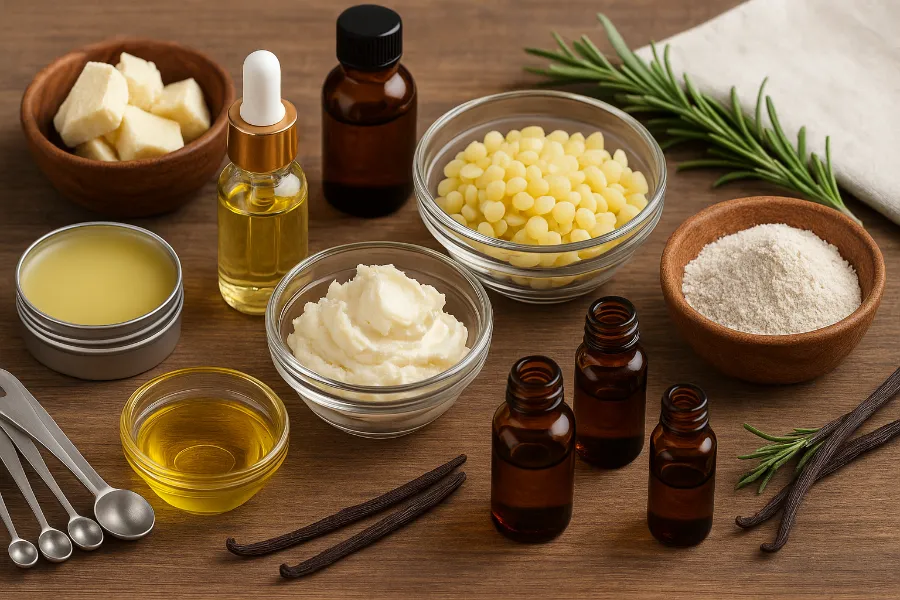
Before you dive into your first recipe, it helps to stock a small starter kit. The good news? You don’t need fancy equipment or a chemistry lab.
Core Ingredients
- Botanical oils: Jojoba, almond, rosehip, grapeseed, or sunflower oil
- Butters: Shea, cocoa, or mango butter for rich textures
- Waxes: Beeswax or plant-based waxes for structure in balms
- Clays & powders: Kaolin clay, activated charcoal, oatmeal powder
- Hydrosols: Rose water, lavender water, or green tea hydrosol
- Additives: Vitamin E oil, natural colorants, essential oils (lavender, peppermint, rose, chamomile)
Tools You Already Have
- Mixing bowls and spoons
- Whisk or hand mixer
- Heat-proof glass jars or bowls
- Measuring spoons or a digital scale
- Small tins, jars, or dropper bottles for storage
Once you gather these basics, you’ll be ready to make almost any beginner-friendly homemade beauty product.
10 Best Homemade Beauty Products to Try
Ready to get creative? These recipes are beginner-friendly, affordable, and genuinely effective. Each one uses simple ingredients but leaves room for customization.
1. Body Butter
Rich, silky, and hydrating, homemade body butter is a must-try. A mix of shea butter, coconut oil, and a touch of almond oil creates a whipped, luxurious cream that melts into the skin. Add lavender essential oil for a calming nighttime lotion, or citrus oils for a refreshing morning pick-me-up.
Pro tip: Whip it in intervals—melt, chill, whip, and repeat—for the fluffiest texture.
2. Balms (Face, Hand, and Body)
Balms are firmer than butters and fantastic for locking in moisture. With beeswax, cocoa butter, and oils like jojoba, you can create healing hand balms or nourishing face balms. Add sea buckthorn oil for a golden glow or chamomile for sensitive skin.
Best for: Dry patches, cuticles, and areas that need an intensive moisture barrier.
3. Lip Balms, Serums, and Scrubs
Everyone loves a good lip balm, and they’re incredibly easy to make. Combine beeswax, coconut oil, and shea butter for a classic balm. Add beetroot powder for a tinted version or vanilla extract for a sweet touch.
- Lip scrub: Mix sugar with honey and coconut oil.
- Lip serum: Use lightweight oils like rosehip and vitamin E for overnight repair.
4. Face and Body Oils
Oils sound intimidating, but they can be a skincare miracle. For a daytime face oil, try jojoba (non-comedogenic and light). For mature or dry skin, blend rosehip, argan, and vitamin E for a nourishing night oil.
Dual use: Many oils also double as cleansers. Massage into your skin, then wipe away with a warm cloth.
5. Powdered Face Cleansers
Powder cleansers are trending because they’re eco-friendly and preservative-free. Combine kaolin clay, rice powder, and a touch of oatmeal for a soothing blend. Activate with water or rose hydrosol before applying.
Variation: Add ground lavender buds for gentle exfoliation.
6. Activated Face Masks
Masks are where homemade beauty products get fun. Try charcoal and bentonite clay for deep cleansing, or spirulina and moringa powder for a nutrient boost. Superfruit powders (like acai or blueberry) add antioxidants and color.
Tip: Mix only what you need per use to keep powders fresh.
7. Face Toner
Toners refresh, balance, and prep your skin. A simple DIY version uses rose water, witch hazel, and a few drops of aloe vera juice. For acne-prone skin, add tea tree oil (in safe dilution).
Store in a spray bottle for a quick mist throughout the day.
8. Hair Styling Wax
Forget chemical-laden styling products—natural wax does the trick. Blend beeswax, cocoa butter, and a lightweight oil for hold and shine. Customize with rosemary essential oil for scalp health or peppermint for a fresh scent.
Note: Adjust the wax-to-oil ratio for stronger or softer hold.
9. Hair Mist
Think of it as a toner for your hair. Combine distilled water with aloe vera juice and a few drops of lavender or rose essential oil. Add glycerin for extra hydration. This mist refreshes between washes and reduces frizz.
Bonus: Use it as a pillow spray for relaxation.
10. Gel Face Cleanser
One of the trendier DIY products, gel cleansers are light and refreshing. Use natural gums like xanthan or guar gum with aloe vera gel and hydrosols. Add a few drops of chamomile extract for calming benefits.
Variation: Make an oleogel that transforms into a milk when rinsed with water—luxurious and fun to use.
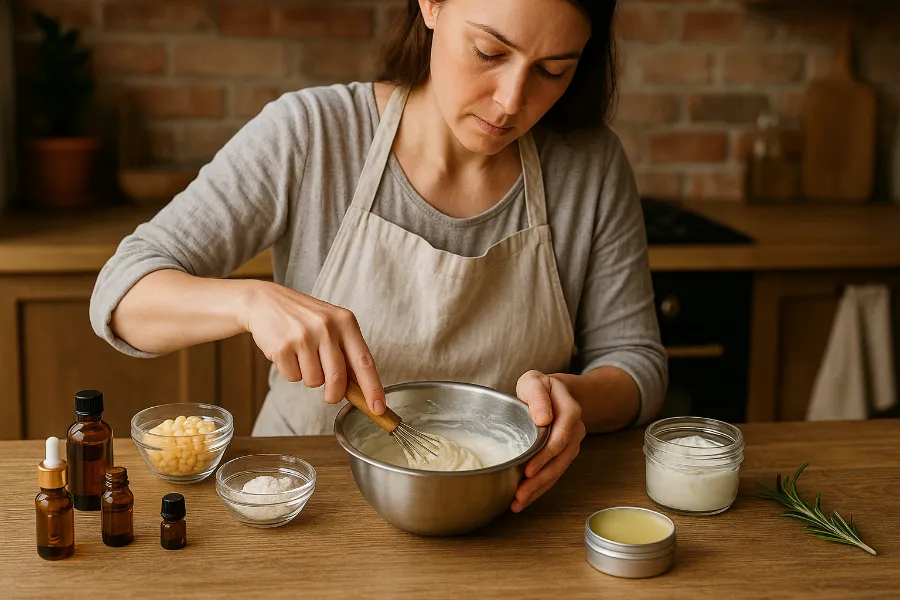
Tips for Safe DIY Formulation
Homemade beauty products are simple, but safety matters—especially with water-based formulas. Here are key tips:
- Preservation: Oil-only products (like balms and butters) don’t need preservatives. Water-based products (like toners and mists) do. Use natural preservatives like leucidal liquid or keep refrigerated for short-term use.
- pH Testing: Invest in pH strips for water-based recipes. Skin-friendly pH is usually between 4.5 and 5.5.
- Packaging: Store oils in dark glass bottles to prevent oxidation. Use clean, dry utensils to avoid contamination.
- Batch size: Make small batches to keep everything fresh.
How to Personalize Homemade Beauty Products
One of the biggest perks of homemade beauty products is personalization. A few adjustments can make the same recipe suit very different needs.
- For dry skin: Add richer oils like avocado or macadamia.
- For oily skin: Choose lightweight oils like grapeseed or hemp seed.
- For sensitive skin: Skip essential oils or choose gentle ones like chamomile.
- For scent lovers: Experiment with essential oil blends—floral, citrusy, or grounding.
- For color: Use beetroot powder, turmeric, spirulina, or mica powders.
Taking the Next Steps in Your DIY Journey
Once you’ve mastered the basics, you can experiment with more advanced techniques:
- Emulsions: Creams and lotions that combine water and oil with emulsifiers.
- Gels: Using natural gums for a smooth, cooling texture.
- Serums: Adding active ingredients like hyaluronic acid or vitamin C.
- Branding: Many formulators turn their passion into small businesses, selling at markets or online.
The beauty world is full of possibilities—you can keep it personal or take it professional.
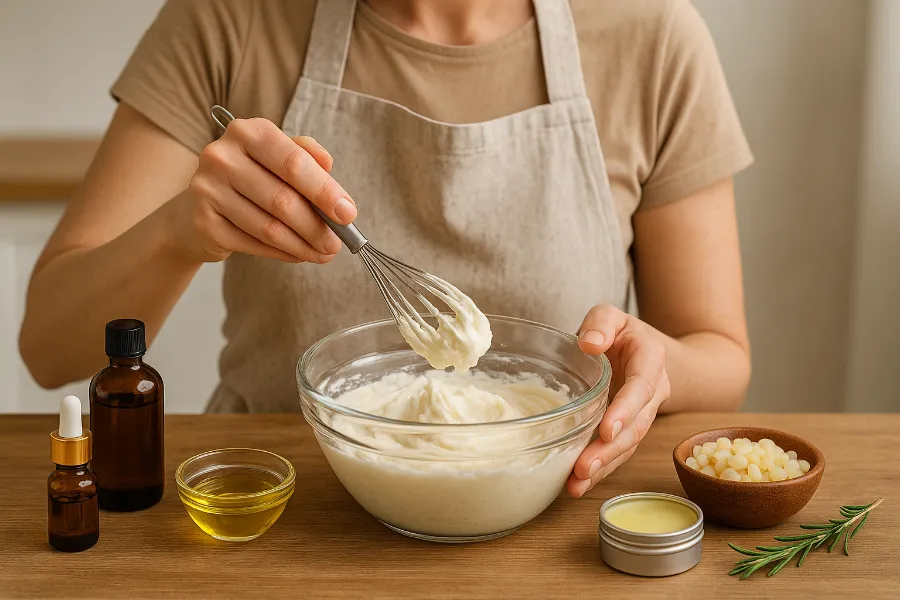
Conclusion: Embrace the World of Homemade Beauty Products
Crafting homemade beauty products isn’t just about skincare or haircare—it’s about creativity, sustainability, and empowerment. With just a handful of ingredients and a little curiosity, you can make products that rival store-bought versions, tailored exactly to your needs.
Whether you’re mixing up a simple lip balm or experimenting with a gel cleanser, every recipe brings you closer to self-sufficiency and a healthier routine. So grab those oils and butters, roll up your sleeves, and start your DIY journey today. Your skin—and your wallet—will thank you.



